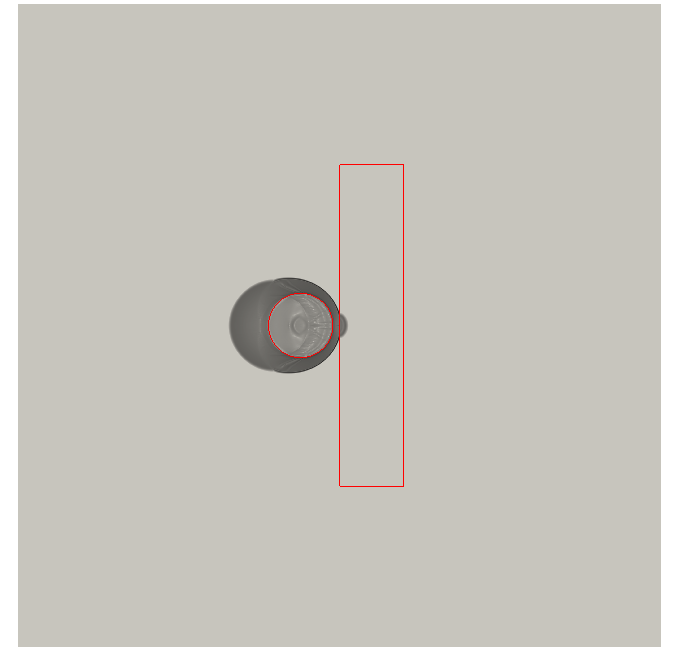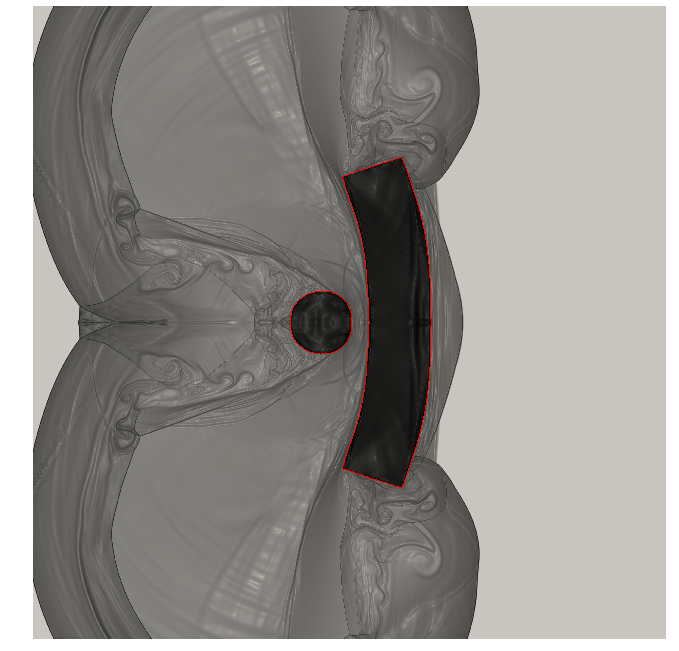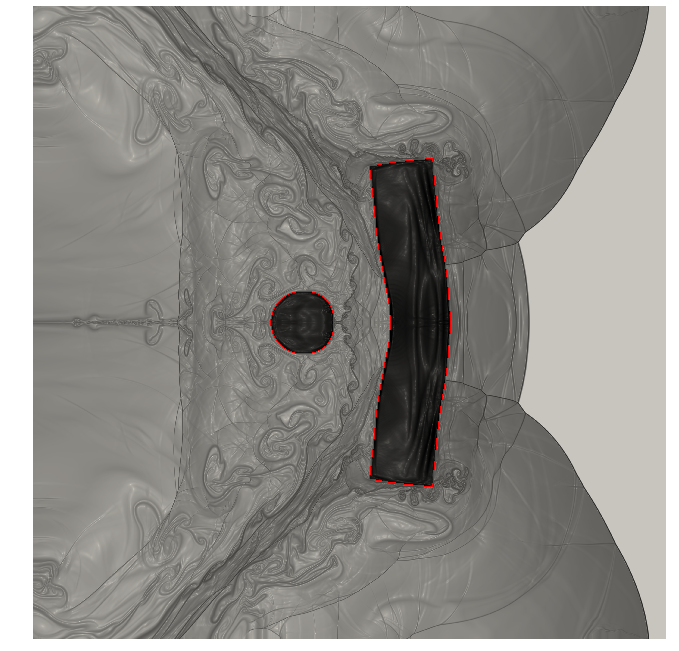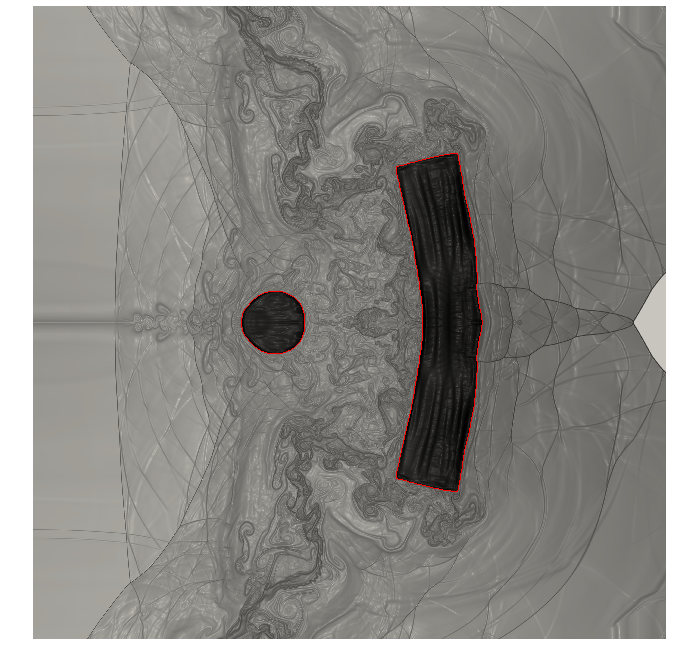Section: Application Domains
Impacts
The numerical modelling of multimaterial rapid dynamics in extreme conditions is an important technological problem for industrial and scientific applications. Experiments are dangerous, need heavy infrastructures and hence are difficult and expensive to realize. The simulation of such phenomena is challenging because they couple large deformations and displacements in solids to strongly non-linear behaviour in fluids. In what follows, we privilege a fully Eulerian approach based on conservation laws, where the different materials are characterized by their specific constitutive laws. This approach was introduced in [46] and subsequently pursued and extended for example in [51], [45], [35], [59].
We study hyper-velocity phenomena where several materials are involved. An example of this approach is the impact of a projectile immersed in air over a shield, see figure 2. Using the same set of equations across the entire domain, we model the compressible fluid, the hyperelastic material and the interaction at the interface that models possible rebounds. Only the constitutive laws characterize the different materials.
The simulation is performed over a fixed Cartesian grid so that the resulting numerical scheme allows an efficient parallelization (512 processors in this case) with an isomorphism between grid partitioning and processor topology. The challenge for our team is to increase the accuracy of the simulation thanks to grid refinement in the vicinity of the moving interfaces, still guaranteeing scalability and a simple computational set up.






